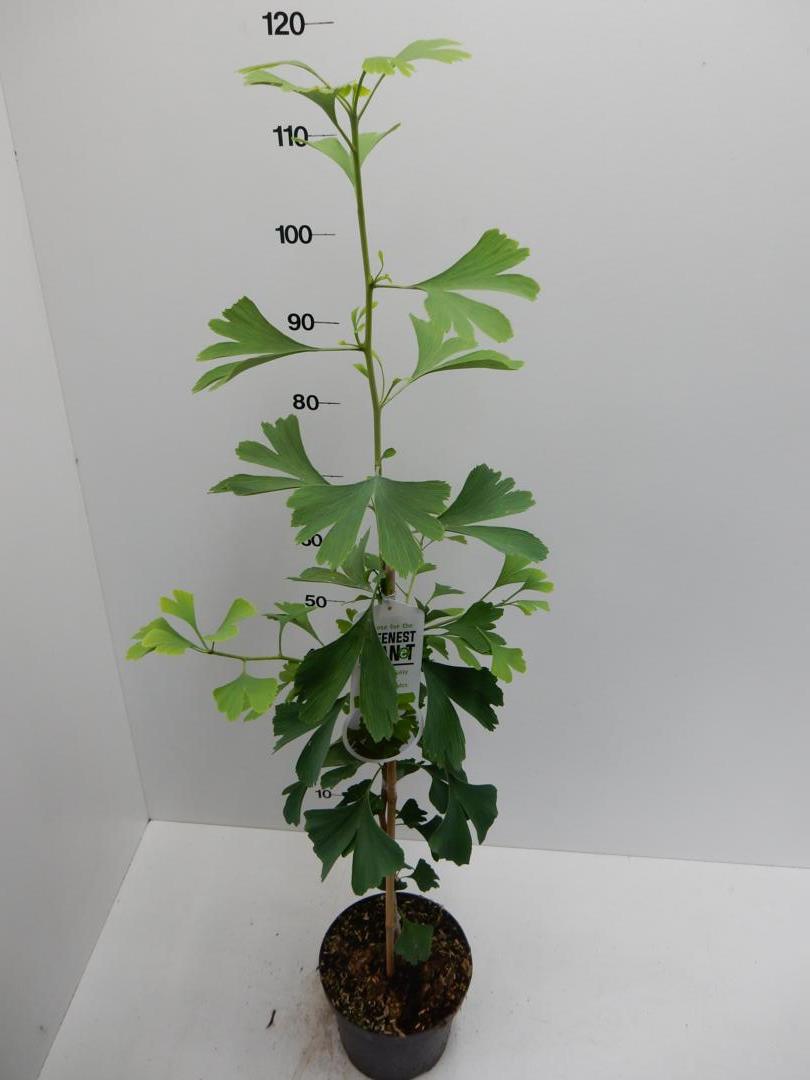Folk name: Japanese walnut tree
Plant height: approx. 6 - 8 m
Deciduous: Yes
Hardy: Good
Description: In the Far East, the ginkgo is an object of worship. In Japan, the tree is worshipped as a god. The ginkgo symbolises immutability, hope, love, magic, timelessness, and long life. For thousands of years in China, the seeds of the ginkgo have been used for respiratory problems, bladder and kidney problems, digestive problems, hearing loss and other ailments. The leaf of the ginkgo is also used in cosmetics (skin products, shampoo), as an insecticide and as fertiliser.
Pruning: in spring
Flowering time: The plant flowers in late spring (around May and June) and bears fruit in September and October
Pitch:
You can place the plant in the sun
Care:
Before planting, soak the pot in a bucket of water for 10 minutes. Botanically, the 'fruits' of the ginkgo are the seeds. Because the seed coat is fleshy, they appear to be fruits.
History:
This tree is a living fossil, unchanged since the time of the dinosaurs. The Ginkgo was common across the northern hemisphere hundreds of years ago.
Significance:
The name Ginkgo originally comes from the Chinese yin-kuo, but was eventually named via the Japanese pronunciation ginko. The seeds are apricot-shaped with a silver glow (hence the name Ginkgo: gin = silver; kyo = apricot)









